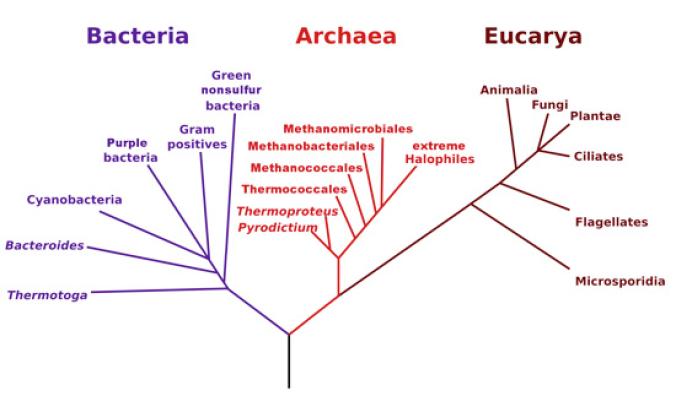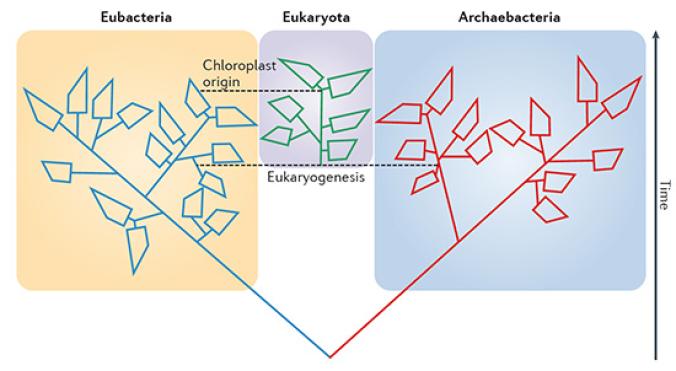
There is a scientific picture waiting to be drawn. Someone has to do artistic justice to the evolutionary tree of life.
Back in 1837, Charles Darwin sketched out a tree of life in a notebook as a way to visualize his idea that different species share a common ancestor. In the generations since he published The Origin of Species, biologists have tried to draw trees that distill the actual relationships between living things.
As I wrote in 2012, the discovery of molecular biology gave scientists a better telescope for looking back through evolutionary history at the branches of the tree of life. Our DNA is an historical archive, storing a wealth of information about our kinship with the rest of life. In the 1970s, the biologist Carl Woese attempted the first sketch of the tree of life–a tree including the biggest groups of species. Woese argued that life consisted of three great branches–what he called domains. Those domains were typically referred to as bacteria, archaea, and eukaryotes–the last being our own.
Three-domain tree. Wikipedia. High-resolution version here: http://bit.ly/threedomains The three-domain tree. See Wikipedia for a larger version
But this picture now appears to be wrong. A number of studies now suggest that the tree of life does not have three domains. Eukaryotes evolved from a lineage of archaea, which merged with a species of bacteria. In other words, we descend from a colossal hybridization. I blogged about some of this research in 2012, and this February, Ed Yong published a fantastic longer piece in Nautilus that included more recent research.
Today, three biologist offered an updated look at the evidence in Nature Reviews Microbiology. James McInerney, Mary O’Connell and Davide Pisani argue that the evidence in favor of the three-domain tree has been steadily diminishing, while the evidence for a merger has been gaining strength.
Maybe I have an overactive visual cortex, but when I read things like this, I think to myself, “What should I be seeing?” And perhaps I’m even more primed to ask that question because I’ve written textbooks about evolution, where pictures are invaluable for conveying the gist of complicated concepts. So I was intrigued that McInerney and his colleagues used this picture to illustrate their piece. (A bigger version is here. That “chloroplast origin” is a wonderful tale in itself: how the algae that gave rise to plants gained the ability to capture sunlight for energy. For the full story, read Eating the Sun.)

It’s a beautiful picture, but…well, I’m not sure it quite works. It still has a three-ness to it, despite the fact that McInerney and his colleagues call on us to ditch the whole concept of three domains. Part of the problem may be that Darwin was only half right when he championed the tree of life as a metaphor for evolution. Mathematically speaking, a tree is a graph made of splitting lines. But the full story of evolution appears to be a graph that doesn’t just split, but also joins together into rings and other shapes (see this paper [pdf]for details). It becomes harder to slice life up into neat groups when it keeps joining together.
I’ll probably use this figure in the next edition of my textbook, but I hope some visionary artist comes up with a new way to look at life